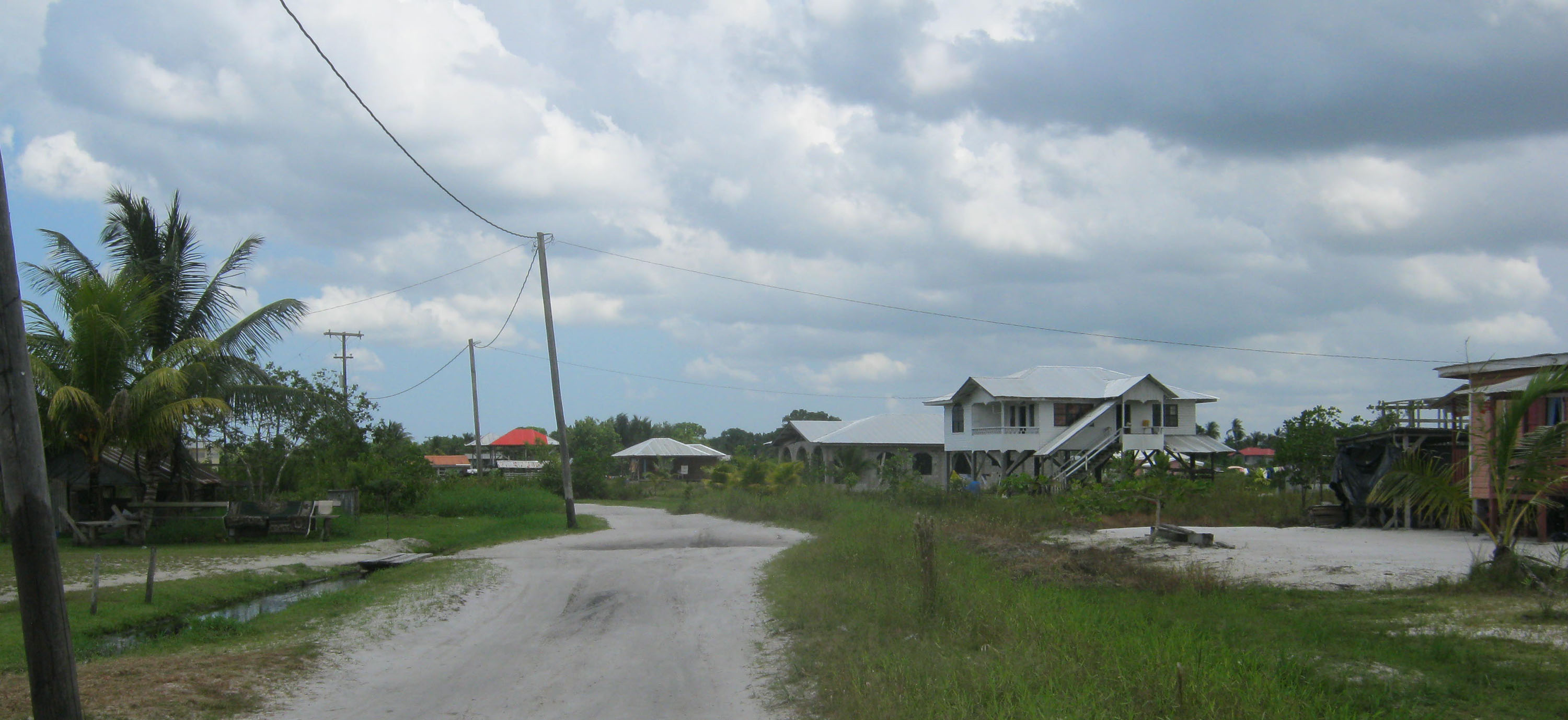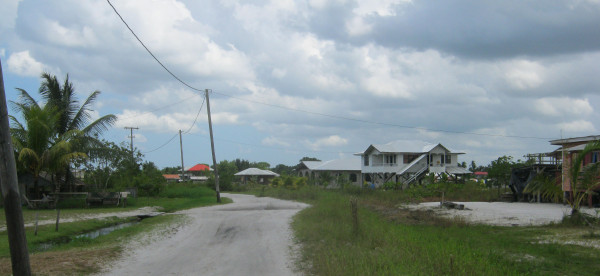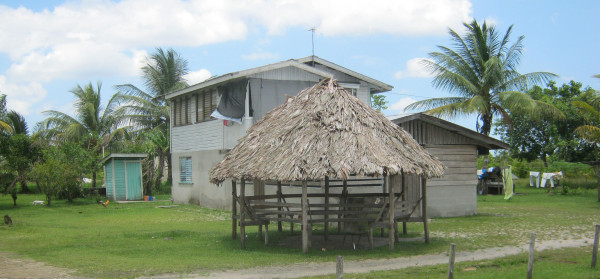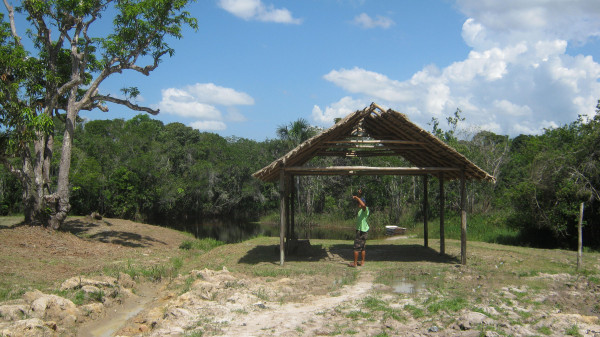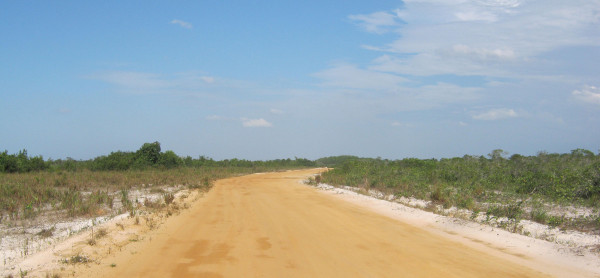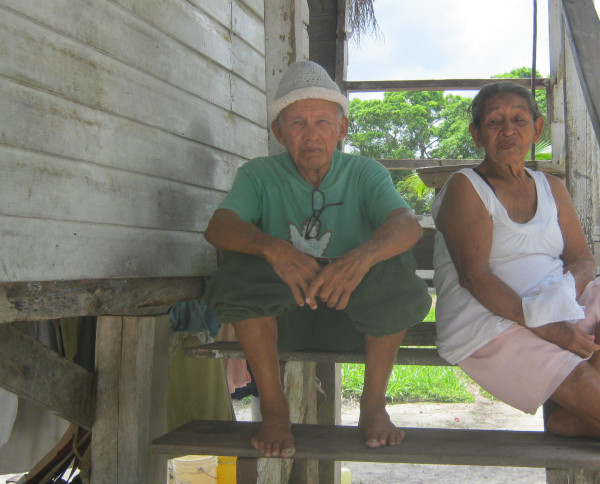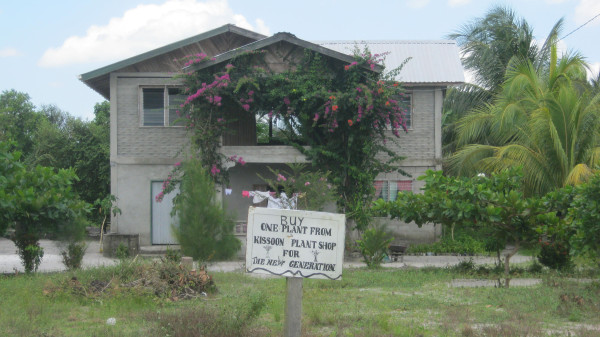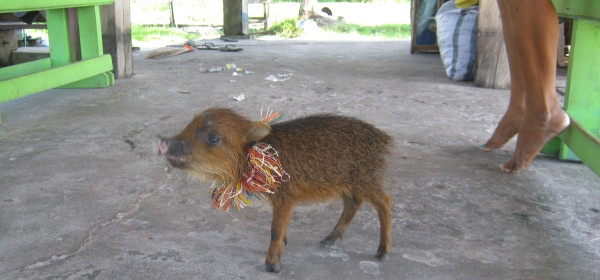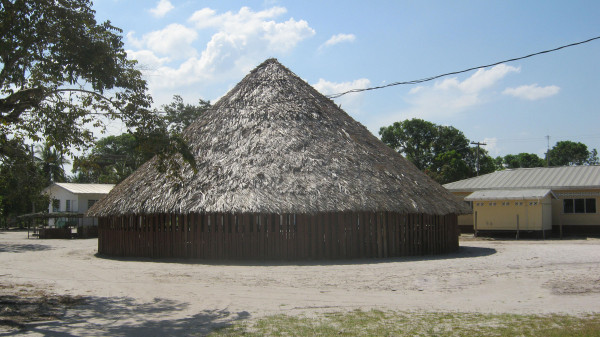Story and photos by Roger Wong
Hidden behind thick forest, about eleven miles off the Soesdyke-Linden Highway St Cuthbert’s Mission sits amid a vast display of flora and fauna and is home to more than 1,200 Indigenous Guyanese.
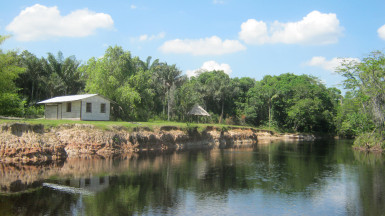
Although it is the closest settlement of Indigenous people to Georgetown—just about an hour’s drive from the Soesdyke junction—it is still waiting to be discovered by many.
Though so close, it presents a world that is completely different from the busy life of the city, one which is set apart for its breathtaking scenery, black water, fresh air and forest that is the habitat of diverse wild animals, peculiar birds and fishes; and from its white sandy soil, vegetation and tiny flowers unique to the area.
Even more spectacular is the Mahaica River, a constant flow of cold, black water bordered by walls of pure, white sand, mixed with clayey mud and tall, green trees holding cool air, despite the burning mid-morning sun overhead. The black water is also a haven for a variety of aquatic life and if you are fascinated with fishing, it’s the perfect place to go with your fishing hooks.
However, many of the residents believe that the full potential of the community is still to be realised, as a lack of resources has left it struggling to grow economically with roads which remain rough and very few jobs available to villagers.
The main access road is riddled with huge potholes which significantly affect the time vehicles to take traverse it. Owners of vehicles complain of extensive damage, owing to the potholes which overflow during the rainy season, thus compounding the situation.
A drive along the sandy trail mixed with loom, took about forty minutes from the public road to the village when this newspaper visited.
The skilled driver, who was very familiar with the terrain, drove up and down as he manoeuvred from one corner to the other, hitting up to 80 mph wherever the surface was flat. Luckily most of the holes had no water.
Speaking with Stabroek News, one of the oldest residents, Samuel Bernard, 81, said he was born and raised in the village. He spends his days with the love of his life Justine Bernard, 83, who blushed and at first refused to be photographed as she said she is always shy to take pictures. However, since her husband had no objection she hesitantly agreed. Samuel and Justine are still very active and take care of themselves although they have 12 children.
Many of the residents expressed a desire to have the name of the village changed from St Cuthbert’s Mission to Pakuri as that was its original name. However, Bernard is not in agreement with those villagers. He said that the village was founded by his great grandfather many years ago after he travelled with his family from the Demerara River and made Pakuri his home.
Many years after, a White priest arrived at the village on a day which is celebrated as St Cuthbert’s day on a religious calendar and as a result, he changed the name from Pakuri to St Cuthbert’s Mission.
Since the new name is now very familiar to Guyanese and many who are residing abroad and the former name is now obsolete, Bernard said it would be a grave injustice to the years of development of the village, to now brand it with a different name that is foreign to most.
Although many of the houses now have contemporary designs with candy colours, Bernard recalled days when there was nothing but wood, leaves and mud that the founders used to make houses.
“There was nothing like beds or houses like we have now… We had daubed floors and leaves for our roof,” Bernard said as he noted that his parents were very respectable and instilled good values in their children. “Now them young people have no respect for anybody or the elderly people,” Bernard added.
The man who is versed in the Arawak language, quickly blurted out a few sentences before translating them, while he said that he is saddened that the dialect has somewhat regressed amongst the younger generation, although some of his offspring, a nursery child amongst them understand and respond to him in the native dialect.
There is a nursery, along with a primary and a secondary school in the community, but residents expressed the desire for more trained teachers as they believe the community could produce more professionals should more emphasis be placed on education.
Similarly, the health system needs more staff. Although there is a resident doctor and medex there, residents said, there is no midwife or cleaner for the hospital.
There is also a playfield and youth centre along with a craft shop and a traditional benab which benefits the community.
There is a guest house, but it is not operational. An eco-lodge which was built a year ago is abandoned and it is being taken over by weeds.
Other major concerns which residents expressed are the lack of jobs and investment to create employment for the community.
Some of the villagers are involved in small-scale farming, while many of the men seek employment in the mining sector.
Logging which was once a major economic activity for villagers is now becoming scarce as most of the valuable lumber has been harvested and it is too costly to access what is left in the distant lands.
Some residents believe that if the situation of the road can be addressed, it will result in substantial growth in the village economy.
One driver who spoke under the condition of anonymity said that at the moment, there is a student pursuing education at the University of Guyana and many days she is forced to pay a taxi $6000 to take her from Soesdyke junction to her home, as public transportation is only available for a limited time.
The driver believes that if the road is fixed, more persons might be encouraged to pursue studies and jobs outside of the village, as transportation might be more accessible.
The driver said that if the number of persons travelling to and from the village increases, drivers will extend the time during which the public transportation can be accessed.
Concerns were also raised over the journey for patients who require urgent medical attention. The driver recalled the torture a resident met after he sustained a broken rib, and had to endure the 11-mile trip of constant bouncing as he made his way out of the village to seek medical attention.
